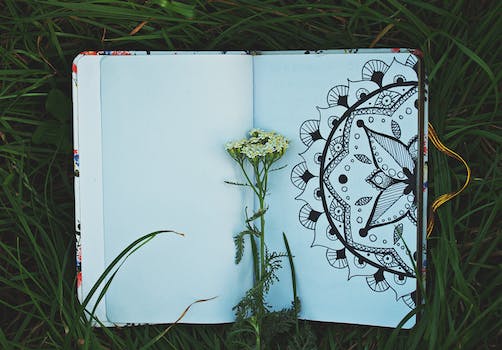

-
Table of Contents
Illuminating the brilliance of Black painters, celebrating their invaluable contributions.
Introduction
Recognizing Black Painters: Shedding Light on Unsung Heroes
The world of art has been enriched by countless talented individuals throughout history, yet many Black painters have remained unrecognized and their contributions overlooked. This lack of recognition not only diminishes the diversity and richness of artistic expression but also perpetuates systemic biases within the art world. Shedding light on these unsung heroes is crucial to rectify this historical injustice and to celebrate the immense talent and creativity that Black painters have brought to the art world. In this article, we will explore the importance of recognizing Black painters, their significant contributions, and the need for a more inclusive and equitable art community.
The Impact of Black Painters on Art History
The Impact of Black Painters on Art History
Art history is often dominated by the works of white artists, with the contributions of black painters often overlooked or undervalued. However, it is crucial to recognize the significant impact that black painters have had on the art world throughout history. These unsung heroes have not only challenged societal norms but also brought forth unique perspectives and narratives that have enriched the art world.
One of the most notable black painters in art history is Jean-Michel Basquiat. Born in Brooklyn in 1960, Basquiat rose to prominence in the 1980s with his graffiti-inspired paintings. His works were a powerful response to the social and political issues of his time, addressing themes of racism, inequality, and identity. Basquiat's bold and expressive style, combined with his thought-provoking subject matter, challenged the traditional notions of what art should be. His impact on the art world cannot be overstated, as he paved the way for future generations of black artists to express themselves freely.
Another influential black painter is Faith Ringgold. Ringgold is known for her vibrant and narrative quilts, which she began creating in the 1970s. Her quilts tell stories of African American history and culture, often addressing themes of racism, feminism, and identity. Ringgold's use of quilting as a medium challenged the traditional boundaries of art, as quilting was often seen as a craft rather than fine art. Through her work, Ringgold not only brought attention to the rich history and experiences of African Americans but also elevated quilting to the realm of high art.
Kara Walker is yet another black painter who has made a significant impact on art history. Known for her large-scale silhouette installations, Walker explores themes of race, gender, and power. Her work often confronts the dark history of slavery and the ongoing struggles faced by black Americans. By using the medium of silhouettes, Walker creates haunting and thought-provoking scenes that force viewers to confront uncomfortable truths about the past and present. Her work challenges the viewer to question their own biases and complicity in perpetuating systemic racism.
The contributions of black painters extend beyond the United States. In the Caribbean, the work of Jamaican painter Edna Manley has had a profound impact on the art world. Manley's paintings often depict scenes of everyday life in Jamaica, capturing the vibrancy and spirit of the island. Her work celebrates the beauty of the Caribbean and its people, challenging the Eurocentric standards of beauty that have dominated the art world for centuries. Manley's paintings have not only brought attention to the rich cultural heritage of Jamaica but have also inspired generations of Caribbean artists to embrace their own unique artistic voices.
In conclusion, the impact of black painters on art history cannot be understated. From Jean-Michel Basquiat's powerful social commentary to Faith Ringgold's narrative quilts, these artists have challenged societal norms and brought forth unique perspectives and narratives. Their contributions have enriched the art world, forcing viewers to confront uncomfortable truths and question their own biases. It is essential to recognize and celebrate the work of these unsung heroes, shedding light on their significant contributions to art history.
Overlooked Black Painters and Their Contributions

Recognizing Black Painters: Shedding Light on Unsung Heroes
Overlooked Black Painters and Their Contributions
Art has always been a powerful medium for self-expression, cultural representation, and social commentary. Throughout history, countless artists have left their mark on the world through their creative works. However, it is unfortunate that many talented black painters have been overlooked and underappreciated for their contributions to the art world. In this section, we aim to shed light on these unsung heroes and highlight their significant impact on the world of painting.
One such artist is Henry Ossawa Tanner, an African American painter who gained recognition for his remarkable talent during the late 19th and early 20th centuries. Despite facing racial discrimination and limited opportunities, Tanner's works showcased his exceptional skill and unique perspective. His masterpiece, "The Banjo Lesson," captures the intimate moment between a young boy and an older man, symbolizing the passing down of cultural heritage. Tanner's ability to convey emotion and tell stories through his paintings is a testament to his artistic prowess.
Another overlooked black painter is Alma Thomas, who emerged as a prominent figure in the art world during the mid-20th century. Thomas, an educator and art instructor, broke barriers as the first African American woman to have a solo exhibition at the Whitney Museum of American Art. Her abstract paintings, characterized by vibrant colors and rhythmic patterns, reflect her deep connection to nature and her exploration of the human experience. Thomas's contributions to the abstract expressionist movement challenged traditional notions of art and paved the way for future generations of black artists.
Moving forward in time, we encounter the works of Kerry James Marshall, a contemporary black painter whose art confronts issues of race, identity, and representation. Marshall's paintings often depict black figures in everyday settings, challenging the lack of representation of black people in art history. His piece, "A Portrait of the Artist as a Shadow of His Former Self," is a powerful commentary on the erasure of black artists from the art canon. Marshall's bold use of color and meticulous attention to detail make his paintings visually striking while also conveying a powerful message.
It is essential to recognize the contributions of black painters not only for their artistic merit but also for the narratives they bring to the forefront. These artists have used their work to challenge societal norms, address racial inequality, and celebrate black culture. By shedding light on their achievements, we can begin to rectify the historical oversight and ensure that their voices are heard and appreciated.
In recent years, there has been a growing movement to acknowledge and celebrate the work of black painters. Museums and galleries are increasingly showcasing exhibitions dedicated to black artists, providing a platform for their talent to be recognized and celebrated. This increased visibility not only honors the contributions of these artists but also inspires future generations of black painters to pursue their artistic dreams.
In conclusion, recognizing the contributions of black painters is crucial for a more inclusive and diverse art world. By shedding light on these unsung heroes, we can challenge the historical biases that have marginalized their work. From Henry Ossawa Tanner to Alma Thomas and Kerry James Marshall, these artists have left an indelible mark on the art world, and it is time for their stories to be told. Let us celebrate their talent, their resilience, and their invaluable contributions to the world of painting.
Celebrating the Artistic Achievements of Black Painters
Recognizing Black Painters: Shedding Light on Unsung Heroes
Art has always been a powerful medium for self-expression and storytelling. Throughout history, countless artists have used their talents to capture the essence of the human experience and provoke thought and emotion. However, the contributions of black painters have often been overlooked and underappreciated. In this section, we aim to celebrate the artistic achievements of these unsung heroes, shedding light on their incredible talent and the impact they have had on the art world.
One such artist is Jean-Michel Basquiat, whose vibrant and raw paintings challenged societal norms and explored themes of race, identity, and inequality. Basquiat's work was a reflection of his own experiences as a black man in America, and his unique style combined elements of street art, graffiti, and abstract expressionism. Despite his untimely death at the age of 27, Basquiat's legacy lives on, and his paintings continue to inspire and captivate audiences around the world.
Another remarkable black painter is Faith Ringgold, whose powerful storytelling through art has made her a prominent figure in the art world. Ringgold's work often addresses issues of race, gender, and social justice, and she is best known for her narrative quilts that combine painting, storytelling, and quilting techniques. Through her art, Ringgold has challenged traditional notions of what constitutes fine art and has paved the way for future generations of black artists.
Kehinde Wiley is yet another black painter who has made a significant impact on the art world. Wiley's portraits, often featuring young black men in poses reminiscent of classical European paintings, challenge the lack of representation of black individuals in traditional art. By placing black subjects in positions of power and beauty, Wiley challenges stereotypes and forces viewers to confront their own biases. His work has been widely recognized and celebrated, including his portrait of former President Barack Obama, which now hangs in the National Portrait Gallery.
It is important to recognize that the contributions of black painters extend beyond the realm of contemporary art. The Harlem Renaissance, a cultural and artistic movement that took place in the 1920s and 1930s, saw the emergence of many talented black painters. Artists such as Aaron Douglas, Jacob Lawrence, and Romare Bearden used their art to celebrate black culture and challenge racial stereotypes. Their work not only paved the way for future generations of black artists but also played a crucial role in shaping the cultural landscape of America.
While progress has been made in recognizing the achievements of black painters, there is still much work to be done. The art world remains predominantly white, and black artists continue to face barriers and systemic racism. It is crucial that we continue to celebrate and uplift the work of black painters, ensuring that their contributions are acknowledged and valued.
In conclusion, the artistic achievements of black painters have often been overlooked and underappreciated. From Jean-Michel Basquiat to Faith Ringgold, Kehinde Wiley to the artists of the Harlem Renaissance, these unsung heroes have made significant contributions to the art world. Their work challenges societal norms, addresses issues of race and identity, and forces viewers to confront their own biases. By recognizing and celebrating the talent and impact of black painters, we can begin to shed light on their incredible contributions and work towards a more inclusive and diverse art world.
Q&A
1. Why is recognizing black painters important?
Recognizing black painters is important to shed light on their contributions to the art world and to challenge the historical underrepresentation of black artists.
2. How does recognizing black painters shed light on unsung heroes?
Recognizing black painters sheds light on unsung heroes by bringing attention to their talent, creativity, and the unique perspectives they bring to the art world.
3. What impact does recognizing black painters have on the art community?
Recognizing black painters has a positive impact on the art community by promoting diversity, inclusivity, and a more accurate representation of artistic talent across different cultures and backgrounds.
Conclusion
In conclusion, recognizing black painters is crucial in shedding light on the contributions and achievements of these unsung heroes. By acknowledging their talent and artistic endeavors, we can challenge historical biases and promote inclusivity within the art world. It is essential to celebrate and amplify the voices of black painters to ensure a more diverse and representative art community.












